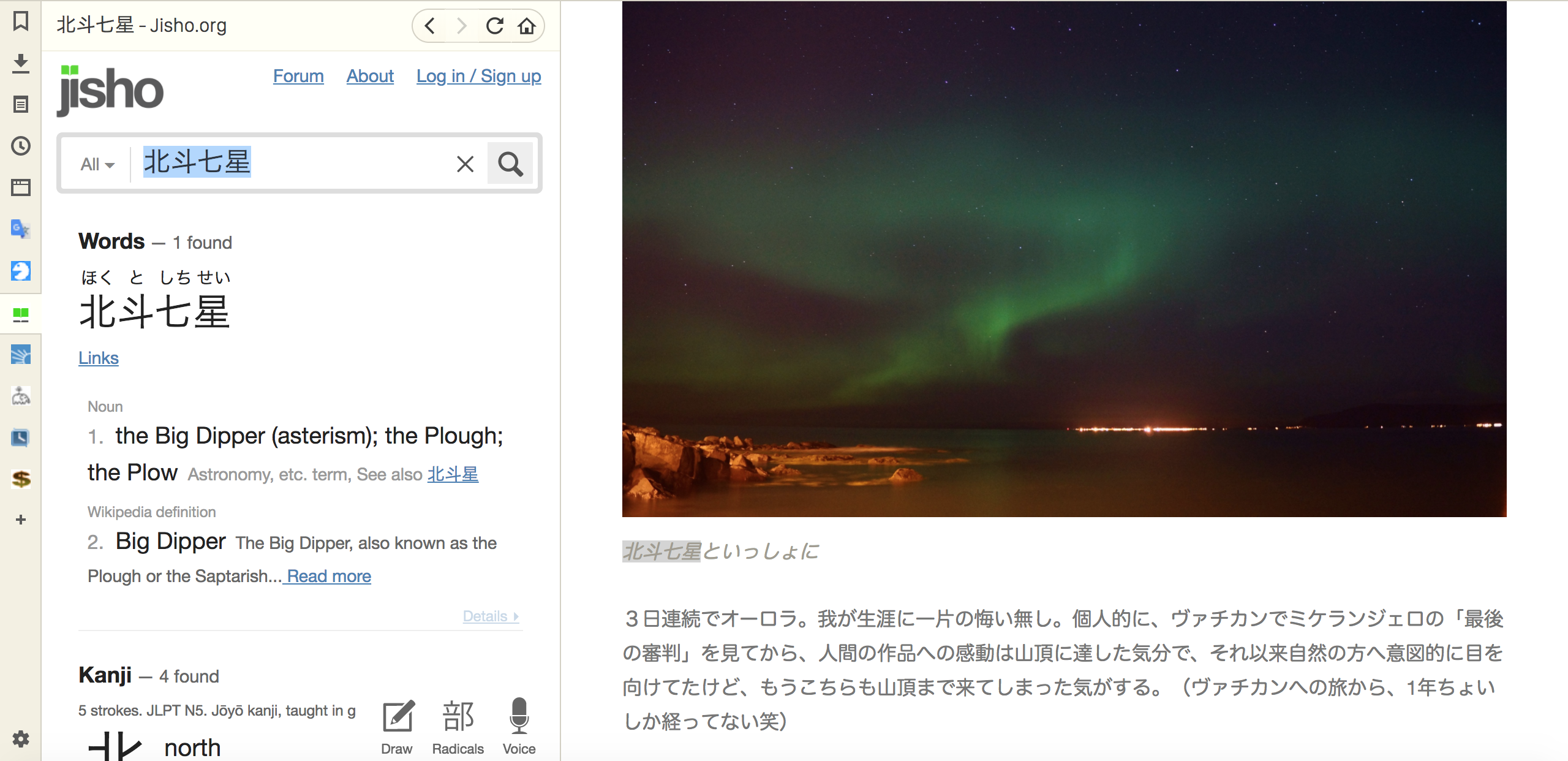
jisho.org on Vivaldi
Yesterday, I met one of my friends who is learning Japanese.
He thankfully downloaded Vivaldi and started setting it up after I recommended it. One of the first things he did was add https://jisho.org/ as a Web Panel. I’d actually seen the page before – yes, it’s one of the most popular Japanese-English dictionaries out there. I’ve seen some of my other friends using it.
He wanted to look up the letter 矯, which I wrote in a document we were looking at. Even though his Japanese is good enough that we had almost all the conversation in Japanese and he got N2 in JLPT (meaning that his ability to understand Japanese used in everyday situations, and in a variety of circumstances to a certain degree is certified by Japanese Language Proficiency Test) not so long ago, the letter 矯 seemed difficult for him.
So, he checked the word on jisho.org and said: “Oh, it’s an N1 (the highest level in JLPT) word.”
It implies that the letter didn’t show itself when he studied for N2, I think. I feel relatable here, having taken HSK 5 and knowing that there are still tons of Chinese characters I’ve never seen or have no idea how to read.
He used to open a new tab to look up Japanese words with his previous browser, but now he can just stay on the same page that shows the word he wants to look up.
This usefulness in reading texts written in a language that I want to be better at is one of the initial reasons why I had got stuck with Vivaldi before I even dreamed of working for them.
And for Japanese learners, I recommend adding jisho.org to your Vivaldi!
3 Comments